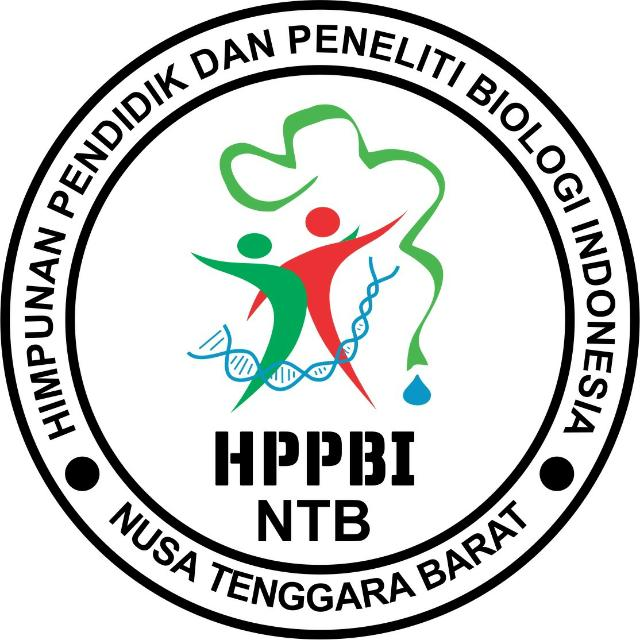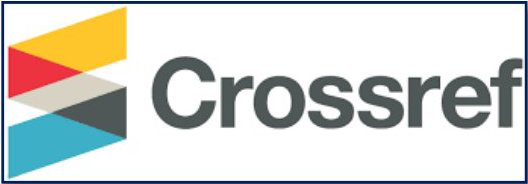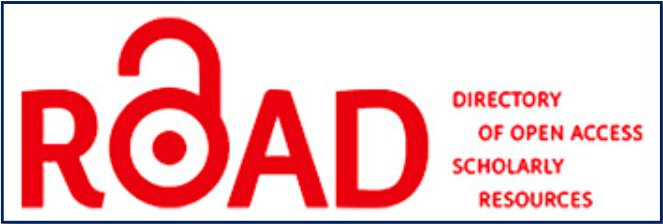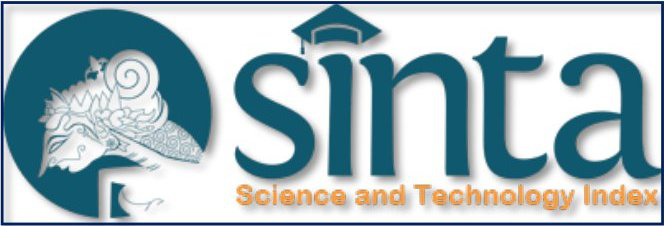Aktivitas Pupisida Ekstrak Etanol Daun Belimbing Wuluh (Averrhoa bilimbi L.) terhadap Kematian Pupa Aedes aegypti L.
DOI:
https://doi.org/10.33394/bioscientist.v13i3.15389Keywords:
Aedes aegypti, Averrhoa bilimbi, kontrol vektor, pupisidaAbstract
This study aimed to determine the pupicidal activity of ethanol extract from bilimbi ( Averrhoa bilimbi L.) leaves against Ae. aegypti pupal mortality. A true experimental design was employed to evaluate the toxicity of various ethanol extract concentrations against pupae over treatment periods of 24 and 48 hours. Mortality rates were recorded and calculated using the WHO mortality formula, and lethal concentrations (LC50 and LC90) were determined via probit analysis to identify concentrations causing 50% and 90% pupal mortality. The results showed that the ethanol extract exhibited dose-dependent pupicidal activity, with the highest mortality observed at 4% concentration, achieving 97.33% mortality after 48 hours. The LC50 values were 2.378% at 24 hours and 1.425% at 48 hours, indicating an increased effectiveness over time. The findings suggest that the ethanol extract of bilimbi leaves has potential as a natural pupicide, offering an eco-friendly alternative for controlling Ae. aegypti populations. Further studies are needed to optimize formulation and field application for sustainable mosquito vector management.
References
Abas, F., Lajis, N. H., Israf, D. A., Khozirah, S., & Umi Kalsom, Y. (2006). Antioxidant and nitric oxide inhibition activities of selected Malay traditional vegetables. Food Chemistry, 95(4), 566–573. https://doi.org/10.1016/j.foodchem.2005.01.034
Adiwibowo, M. T., Herayati, H., Erlangga, K., & Fitria, D. A. (2020). Pengaruh metode dan waktu ekstraksi terhadap kualitas dan kuantitas saponin dalam ekstrak buah, daun, dan tangkai daun Belimbing Wuluh (Avverhoa bilimbi L.) untuk aplikasi detergen. Jurnal Integrasi Proses, 9(2), 44–50.
Cahyati, W. H., Asmara, W., Umniyati, S. R., & Mulyaningsih, B. (2017). The phytochemical analysis of hay infusions and papaya leaf juice as an attractant containing insecticide for Aedes aegypti. Jurnal Kesehatan Masyarakat, 12(2), 218–224.
Catelan, T. B. S., de Arruda, E. J., Oliveira, L. C. S., Raminelli, C., Gaban, C. R. G., Cabrini, I., Nova, P. C. V., & Carbonaro, E. S. (2015). Evaluation of toxicity of phenolic compounds using Aedes aegypti (Diptera: Culicidae) and Artemia salina. Advances in Infectious Diseases, 5(01), 48.
CDC. (2016). Surveillance and control of Aedes aegypti and Aedes albopictus in the United States. Centers for Disease Control and Prevention, Atlanta, GA.
Chantawee, A., & Soonwera, M. (2018). Efficacies of four plant essential oils as larvicide, pupicide and oviposition deterrent agents against dengue fever mosquito, Aedes aegypti Linn.(Diptera: Culicidae). Asian Pacific Journal of Tropical Biomedicine, 8(4), 217–225.
Dusfour, I., Vontas, J., David, J.-P., Weetman, D., Fonseca, D. M., Corbel, V., Raghavendra, K., Coulibaly, M. B., Martins, A. J., & Kasai, S. (2019). Management of insecticide resistance in the major Aedes vectors of arboviruses: Advances and challenges. PLoS Neglected Tropical Diseases, 13(10), e0007615.
Dwicahya, B., Arsin, A. A., Ishak, H., Hamid, F., & Mallongi, A. (2023). Aedes Sp. Mosquito Resistance and the Effectiveness of Biolarvicides on Dengue Vector Mortality. https://repository.unar.ac.id/jspui/handle/123456789/8382
Ghosh, A., Chowdhury, N., & Chandra, G. (2012). Plant extracts as potential mosquito larvicides. Indian Journal of Medical Research, 135(5), 581–598.
Gloria-Soria, A., Brown, J. E., Kramer, V., Hardstone Yoshimizu, M., & Powell, J. R. (2014). Origin of the dengue fever mosquito, Aedes aegypti, in California. PLoS Neglected Tropical Diseases, 8(7), e3029.
Handiny, F., Rahma, G., & Rizyana, N. P. (2020). Buku Ajar Pengendalian Fektor. Ahlimedia Book.
Hillary, V. E., Ceasar, S. A., & Ignacimuthu, S. (2024). Efficacy of plant products in controlling disease vector mosquitoes, a review. Entomologia Experimentalis et Applicata, 172(3), 195–214. https://doi.org/10.1111/eea.13401
Ibrahim, H. M., El-Taieb, M. A., Hassan, M. H., Mohamed, A. A. E., Kotop, E. A., Abd-ellah, O. H., & Hegazy, E. M. (2020). Relations between vitamin D3, total and specific IgE for house dust mites in atopic dermatitis patients. Scientific Reports, 10(1). Scopus. https://doi.org/10.1038/s41598-020-77968-1
Inaba, K., Ebihara, K., Senda, M., Yoshino, R., Sakuma, C., Koiwai, K., Takaya, D., Watanabe, C., Watanabe, A., Kawashima, Y., Fukuzawa, K., Imamura, R., Kojima, H., Okabe, T., Uemura, N., Kasai, S., Kanuka, H., Nishimura, T., Watanabe, K., … Niwa, R. (2022). Molecular action of larvicidal flavonoids on ecdysteroidogenic glutathione S-transferase Noppera-bo in Aedes aegypti. BMC Biology, 20(1), 43. https://doi.org/10.1186/s12915-022-01233-2
Islami, S., Afriyani, A., Damayanti, E., Muharromah, A. F., Nainggolan, L. U. A., Brahmantio, A. S., Prabamukti, I., Hardiansyah, R., Bachtiar, N. A., & Faruq, M. U. A. A. (2025). The Efficacy of Ethanol Extract of Bilimbi Leaves (Averrhoa bilimbi L.) As A Larvicide For Dengue Fever Vector Aedes aegypti L. Serangga, 30(1). https://doi.org/10.17576/serangga-2025-3001-08
Jeyasankar, A., & Chinnamani, T. (2018). Larvicidal and pupicidal activities of Solonum pseudocapsicum fruits compounds against Aedes aegypti, Anopheles stephensi and Culex quinquefasciatus (Diptera: Culicidae). J. Infect. Dis. Med. Microbiol, 2, 11–16.
Komala, S. N., Budianto, B. H., & Basuki, E. (2018). Studi Toksisitas: Ekstrak Metanol Bonggol Pisang Ambon (Musa acuminata L. cv. Gros Michel) terhadap Aedes aegypti (Diptera: Culcidae). Jurnal Aspirator, 10(2), 93–102.
Kweka, E. J., Baraka, V., Mathias, L., Mwang’onde, B., Baraka, G., Lyaruu, L., & Mahande, A. M. (2018). Ecology of Aedes mosquitoes, the major vectors of arboviruses in human population. Dengue Fever-a Resilient Threat Face Innov, 10.
Mackeen, M. M., Ali, A. M., El-Sharkawy, S. H., Manap, M. Y., Salleh, K. M., Lajis, N. H., & Kawazu, K. (1997). Antimicrobial and Cytotoxic Properties of Some Malaysian Traditional Vegetables (Ulam). International Journal of Pharmacognosy, 35(3), 174–178. https://doi.org/10.1076/phbi.35.3.174.13294
Manjarres-Suarez, A., & Olivero-Verbel, J. (2013). Chemical control of Aedes aegypti: A historical perspective. Revista Costarricense de Salud Pública, 22(1), 68–75.
Manwar, M. H. G., & Khan, D. R. A. H. (2022). A Review on Vector Borne Diseases and Controlling Challenges. Journal of Algebraic Statistics, 13(2), Article 2.
Nawarathne, M. P., & Dharmarathne, C. (2024). Control of dengue larvae of Aedes aegypti and Aedes albopictus using the larvicidal bioactive compounds in different plant extracts and plant extract-mediated nanoparticles. Tropical Medicine and Health, 52(1), 95. https://doi.org/10.1186/s41182-024-00654-9
Onen, H., Luzala, M. M., Kigozi, S., Sikumbili, R. M., Muanga, C.-J. K., Zola, E. N., Wendji, S. N., Buya, A. B., Balciunaitiene, A., & Viškelis, J. (2023). Mosquito-borne diseases and their control strategies: An overview focused on green synthesized plant-based metallic nanoparticles. Insects, 14(3), 221.
Pambudi, B. C., Martini, M., Tarwotjo, U., & Hestiningsih, R. (2018). Efektivitas Temephos sebagai Larvasida Pada Stadium Pupa Aedes Aegypti. Jurnal Kesehatan Masyarakat, 6(1), 381–388.
Petersen, L. R., Beard, C. B., & Visser, S. N. (2018). Combatting the increasing threat of vector-borne disease in the United States with a national vector-borne disease prevention and control system. The American Journal of Tropical Medicine and Hygiene, 100(2), 242.
Powell, J. R. (2018). Mosquito-borne human viral diseases: Why Aedes aegypti? The American Journal of Tropical Medicine and Hygiene, 98(6), 1563.
Putra, M. A. S., Bestari, R. S., Hidayatullah, M. I., Felina, S., & Sutrisna, E. (2018). Effectiveness Of Leaf Extractwuluh Starfruit (Averrhoa Bilimbi L) In Killing Larvaeaedes Aegypti. Journal of Bio Innovation, 5, 704–711.
Silvério, M. R. S., Espindola, L. S., Lopes, N. P., & Vieira, P. C. (2020). Plant natural products for the control of Aedes aegypti: The main vector of important arboviruses. Molecules, 25(15), 3484.
Sittichok, S., Passara, H., Sinthusiri, J., Moungthipmalai, T., Puwanard, C., Murata, K., & Soonwera, M. (2024). Synergistic Larvicidal and Pupicidal Toxicity and the Morphological Impact of the Dengue Vector (Aedes aegypti) Induced by Geranial and trans-Cinnamaldehyde. Insects, 15(9), 714. https://doi.org/10.3390/insects15090714
Tokponnon, T. F., Ossè, R., Zoulkifilou, S. D., Amos, G., Festus, H., Idayath, G., Sidick, A., Messenger, L. A., & Akogbeto, M. (2024). Insecticide resistance in Aedes aegypti mosquitoes: Possible detection of kdr F1534C, S989P, and V1016G triple mutation in Benin, West Africa. Insects, 15(4), 295.
Veldkamp, J. F. (2004). Bilimbia (Lichenes) resurrected. The Lichenologist, 36(3–4), 191–195. https://doi.org/10.1017/S0024282904013908
Venkadachalam, R., Subramaniyan, V., Palani, M., Subramaniyan, M., Srinivasan, P., & Raji, M. (2017). Mosquito larvicidal and pupicidal activity of Tephrosia purpurea Linn.(Family: Fabaceae) and Bacillus sphaericus against, dengue vector, Aedes aegypti. Pharmacognosy Journal, 9(6). https://www.phcogj.com/article/400
Verangga, A., Qomariyah, N., & Khaleyla, F. (2023). Effect of Averrhoa bilimbi Leaf Extract on Blood Glucose Level, Hepatosomatic Index (HSI), and Liver Histology of Diabetic Mice. HAYATI Journal of Biosciences, 31(1), 102–109. https://doi.org/10.4308/hjb.31.1.102-109
Weeratunga, P., Rodrigo, C., Fernando, S. D., & Rajapakse, S. (2017). Control methods for Aedes albopictus and Aedes aegypti. The Cochrane Database of Systematic Reviews, 2017(8), CD012759. https://doi.org/10.1002/14651858.CD012759
WHO. (2005). Guidelines for laboratory and field testing of mosquito larvicides. World Health Organization.
Wilson, A. L., Courtenay, O., Kelly-Hope, L. A., Scott, T. W., Takken, W., Torr, S. J., & Lindsay, S. W. (2020). The importance of vector control for the control and elimination of vector-borne diseases. PLoS Neglected Tropical Diseases, 14(1), e0007831.
Downloads
Published
How to Cite
Issue
Section
License
Copyright (c) 2025 Suryadi Islami, Ridwan Hardiansyah, Afriyani Afriyani, Ahmad Fauzan Hafizh, Jedo Muchamad Tias Temun

This work is licensed under a Creative Commons Attribution-ShareAlike 4.0 International License.













